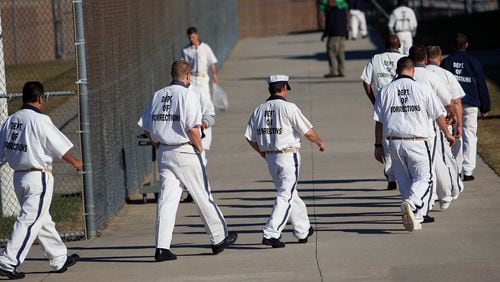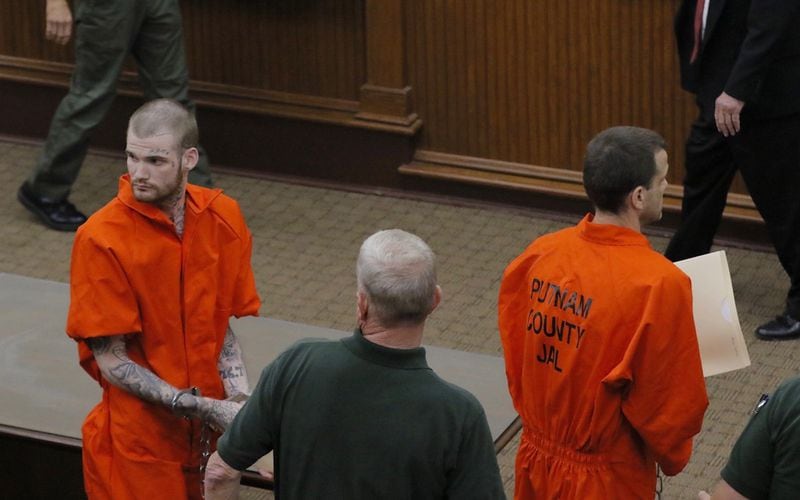During a budget hearing Wednesday under the Golden Dome, Department of Corrections Commissioner Timothy Ward slipped in a chilling nugget into his brief presentation. He noted, almost off-handedly, that his department had a 49% turnover rate in staffing last year.
This is not as jarring as it seems. DOC turnover rates for fiscal years 2018-2020, the last data available, were 35%, 42% and 44%. Trying to maintain staffing is not like pouring water into a leaking bucket. It’s like trying to fill one with no bottom.
Ward said his department, which is under federal investigation for a surge of violence within the prisons and the effects of chronic understaffing, will benefit from a $5,000 annual raise being afforded this year to state employees. This should help retain guards, he said.
Prisons have always been dangerous places. Today, they are murderous. In November, an Atlanta Journal-Constitution investigation found at least 53 inmates in Georgia prisons had been homicide victims in the previous 22 months, more than twice that of the previous two years.
I dug around prison staffing figures and found something absolutely staggering: In fiscal 2020, the last year listed on the DOC site, the department had 4,060 correctional officers guarding 53,412 prisoners. In 1985, there were 3,200 guards for 15,500 prisoners.
Let’s pause to absorb those stats. Over four decades, about 860 more guards were added to mind 38,000 more prisoners. Ward, in his presentation, displayed figures showing the prison population had fallen due to COVID to 45,551 this month. But the number is rising again.
Granted, the state beefed up the number of prison guards through the years, reaching 7,000 in 2010. But staffing has steadily diminished since, while the prison population stayed in the mid-50,000 range.
The state received a federal windfall in tax dollars the last couple years, causing Gov. Brian Kemp to push a record $30 billion budget, $3 billion more than last year’s. In it, he proposed spending $600 million to buy a private prison and build another, which would allow the state to close four older and more dangerous prisons.
During Ward’s presentation, legislators posed only a few questions to the DOC commissioner. It’s almost like the slow-rolling disaster that is Georgia’s prison system is best left out of sight, out of mind.
To that, Sherman Maine, a former Valdosta State prison captain, told me: “I spent 20 years in there, and the only time the public cares is when (prisoners) are whipping our ass or we’re whipping theirs.”
Maine said he routinely gets calls from former colleagues asking advice, worried about dangerous situations caused by skeleton crews forced to guard the prisons. He said correction officers went from working 8-hour shifts to 12-hour shifts and are often forced to do “double 12s” when the guard for the next shift fails to show up. “You are legally obligated to stay,” he said. “You cannot walk out.”
Some guards suffer from PTSD, he said.
Maine said the current setup means prisoners are often “warehoused,” or locked down, making them angry and more dangerous. And this is not only perilous, it’s counterproductive.
“If you don’t have enough staff, you can’t have inmates participate in programs that will help them in the long run, like education, counseling, recreation,” he said.
In the U.S., Maine said, theories about how to manage prisons are “like a pendulum swinging left to right. You’re too liberal, then you’re too conservative.”
Credit: Bob Andres
Credit: Bob Andres
In the 1970s and through the 1980s, Georgia’s system carried an optimistic name: The Department of Offender Rehabilitation. It was then changed to the Department of Corrections. In the 1990s, there was the two-strikes law, and the system expanded rapidly. Several “corrections facilities” had their names officially changed to “prison,” just so inmates would really remember where they were.
In 2011, Gov. Nathan Deal came to office and realized, because of a rising prison population, he’d have to build two prisons at a cost of more than $250 million. He pushed a series of justice reforms that kept thousands of nonviolent offenders out of prisons. It was more fiscally responsible, he told me this week, and more humane. Prisoners worked at the Governor’s Mansion and “we had the opportunity to see the faces of what some of these people look like.”
Deal said the state and other governments must look to the root causes that compel people to commit crime. A lack of education was a big commonality, which is why they expanded such programs in prisons during his time in office.
Unfortunately, these programs often take years to straighten out offenders. And with violent crime increasing in the past few years, “people are enraged and demand results from elective leaders,” Deal said.
Tough initiatives are popular, and the criminal justice merry-go-round keeps spinning.









